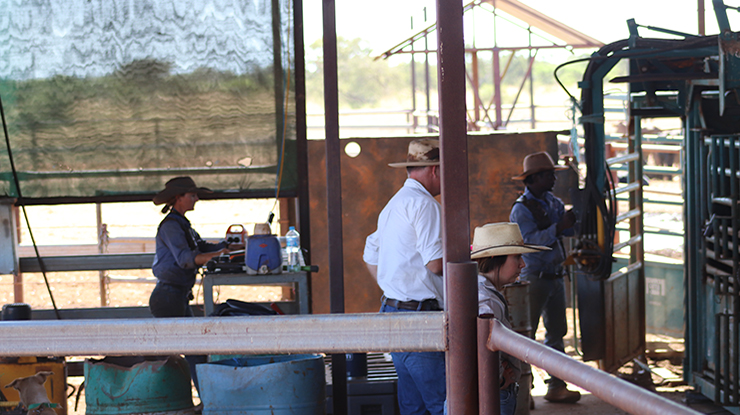
Northern producer Chris Morrow manages Nerrima Station, a 15,000 head beef enterprise in the West Kimberley. Here, Chris talks about his involvement in the Northern Breeding Business (NB2) project and how he uses data across his business to boost production.
"One of the biggest challenges we face here in the north is creating a beef product that can be sold into multiple avenues and not just live export. My previous experience and NB2 allows me to build my knowledge to produce a product which provides a range of marketability," Chris said.
"Our herd consists of Red Brahman and Red Brangus cows. The Red Brangus influence has given us an increase in fertility, producing an animal for the live export market but we can also feedlot our steers and process them through an abattoir for the domestic market."
Data drives business
Chris has used an intense data collection system for the last seven years and uses the Stockbook program to collect data such as:
- weaner weight
- animal health history
- pregnancy status
- average daily gain
- sighted and seen, and last seen.
"We run a data collection system crush side. This process starts at weaning so we can track and collect data on the animal across its life on the station," Chris said.
"Average daily gain is handy to look at the performance of the animal over the years and forecast their weight at time of sale.
"With our females, collecting data on pregnancy status is important so we can work out our quality breeders. This also minimises out-of-season calves and allows us to look after the body condition of the cows."
Three ways accurate records can benefit your beef business
|
Breeder management
Chris manages a controlled mating program to get as many productive breeders into their optimal October to December calving group.
"We separate the breeders into paddocks and about 80% of our breeders fall into October to December calving," Chris said.
"This allows an even line of weaners which will be a consistent line at sale, and we've also managed to increase our average selling weight from 290kg to 335kgs for our steers.
"Four years ago, we started with 1,600 out-of-season calves and now we're down to an average of 100."
A key driver for Chris is knowing how many pregnant females they have on the station at one time. Comparing pregnancy rates to branding percentage determines their calf loss figures.
"We keep an eye on our calf loss figures to make sure there isn't any disease in the herd which needs to be fixed," Chris said.
"To reduce calf loss, we have a heifer vaccination program to set them up for their life of breeding."
People come first
With seven stock camp members, making sure staff input data correctly is one of Chris's main challenges.
"To combat this, I make sure staff are on board with our station goals and explain how the operation is going to work," Chris said.
"Once there is buy-in, the team takes ownership to make sure the data collection is right."
Labour efficiency gains
By having an intense data collection program Chris has gained multiple on-property benefits.
"We've gone from two rounds of mustering per year to one round because the data tells us the information we need to know," Chris said.
"This not only saves operational costs but improves animal welfare, as we aren't handling the cattle in the heat and there is less mismothering and calf loss."






